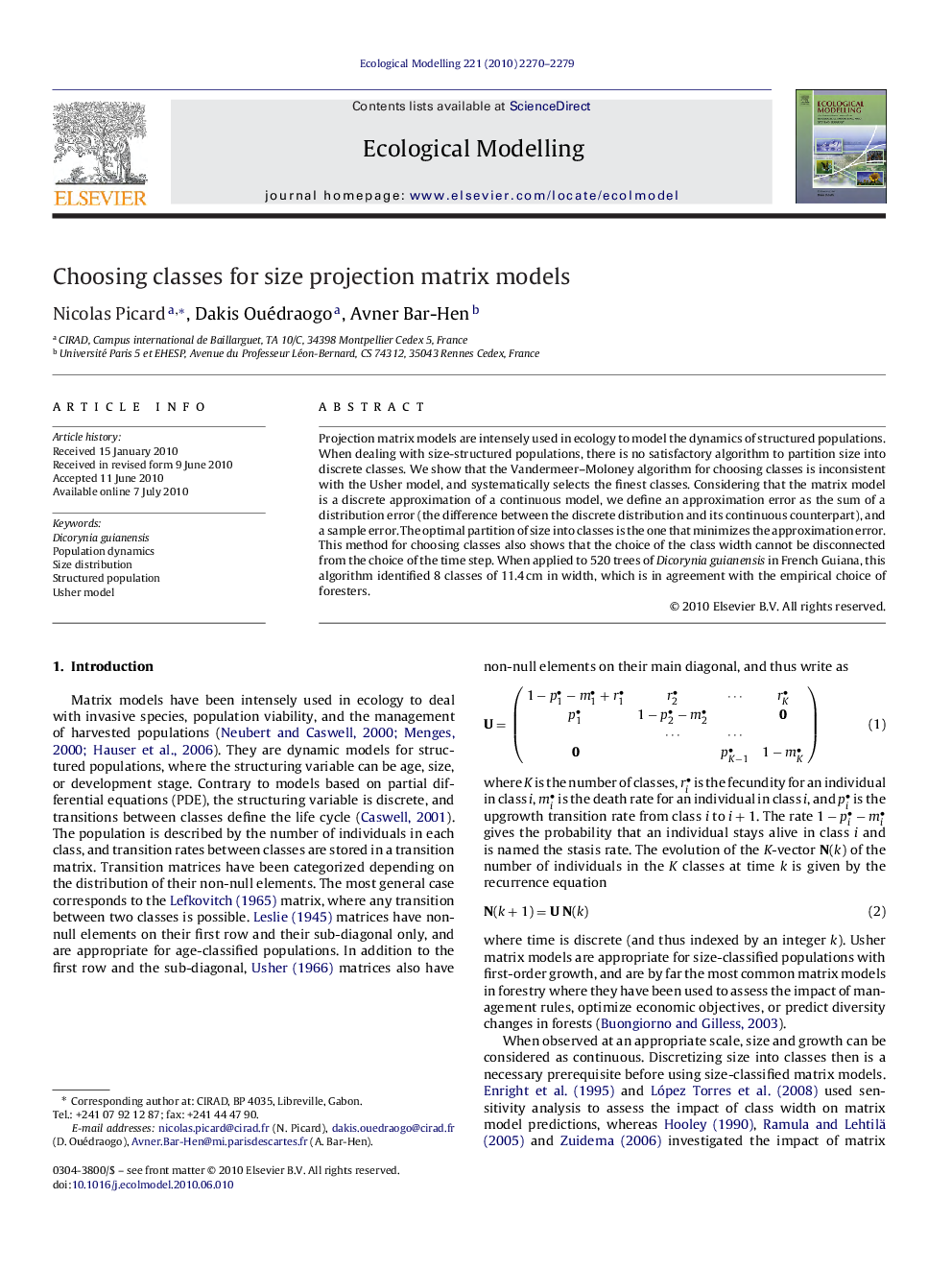| Article ID | Journal | Published Year | Pages | File Type |
|---|---|---|---|---|
| 4377217 | Ecological Modelling | 2010 | 10 Pages |
Projection matrix models are intensely used in ecology to model the dynamics of structured populations. When dealing with size-structured populations, there is no satisfactory algorithm to partition size into discrete classes. We show that the Vandermeer–Moloney algorithm for choosing classes is inconsistent with the Usher model, and systematically selects the finest classes. Considering that the matrix model is a discrete approximation of a continuous model, we define an approximation error as the sum of a distribution error (the difference between the discrete distribution and its continuous counterpart), and a sample error. The optimal partition of size into classes is the one that minimizes the approximation error. This method for choosing classes also shows that the choice of the class width cannot be disconnected from the choice of the time step. When applied to 520 trees of Dicorynia guianensis in French Guiana, this algorithm identified 8 classes of 11.4 cm in width, which is in agreement with the empirical choice of foresters.
